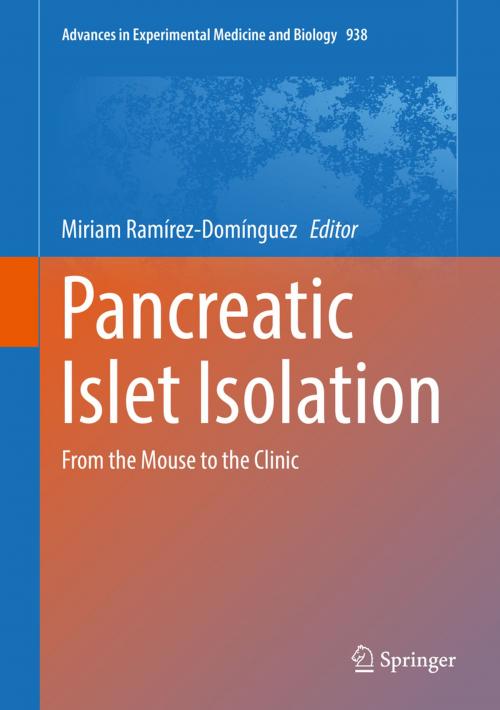Pancreatic Islet Isolation
From the Mouse to the Clinic
Nonfiction, Science & Nature, Science, Other Sciences, Molecular Biology, Technology, Engineering| Author: | ISBN: | 9783319398242 | |
| Publisher: | Springer International Publishing | Publication: | September 1, 2016 |
| Imprint: | Springer | Language: | English |
| Author: | |
| ISBN: | 9783319398242 |
| Publisher: | Springer International Publishing |
| Publication: | September 1, 2016 |
| Imprint: | Springer |
| Language: | English |
Pancreatic islets make up the endocrine pancreas and they contain the only source of insulin in the body, beta cells. Hence, access to high quality preparations of pancreatic islets is fundamental for in vitro studies and to test pre-clinical applications in animal models in vivo. Access to healthy human islets is also crucial to improve transplantation procedures for diabetes. Given the susceptibility of pancreatic islets to the enzymatic digestion and mechanical stress required to obtain them, the isolation of islets is often considered as the delicate “work of a craftsman”. This book, which is aimed at beginners and experts alike, is a survey of the current state-of–the-art in this field and it centres on the challenges, pitfalls and peculiarities of pancreatic islet isolation in the different species used in pre-clinical and clinical applications. It explores the similarities and differences between human islets and those from other relevant species (rodents, pigs and non-human primates), and how these influence islet isolation. The ultimate goal of this book is to improve the outcome of islet isolation and transplantation in pre-clinical and clinical applications.
Pancreatic islets make up the endocrine pancreas and they contain the only source of insulin in the body, beta cells. Hence, access to high quality preparations of pancreatic islets is fundamental for in vitro studies and to test pre-clinical applications in animal models in vivo. Access to healthy human islets is also crucial to improve transplantation procedures for diabetes. Given the susceptibility of pancreatic islets to the enzymatic digestion and mechanical stress required to obtain them, the isolation of islets is often considered as the delicate “work of a craftsman”. This book, which is aimed at beginners and experts alike, is a survey of the current state-of–the-art in this field and it centres on the challenges, pitfalls and peculiarities of pancreatic islet isolation in the different species used in pre-clinical and clinical applications. It explores the similarities and differences between human islets and those from other relevant species (rodents, pigs and non-human primates), and how these influence islet isolation. The ultimate goal of this book is to improve the outcome of islet isolation and transplantation in pre-clinical and clinical applications.















